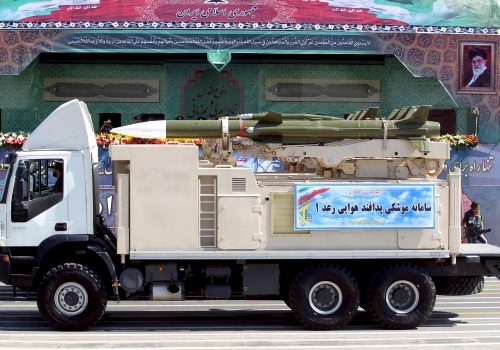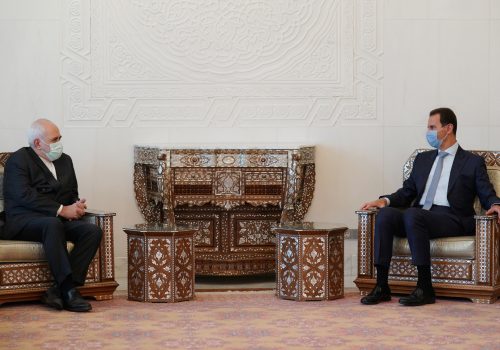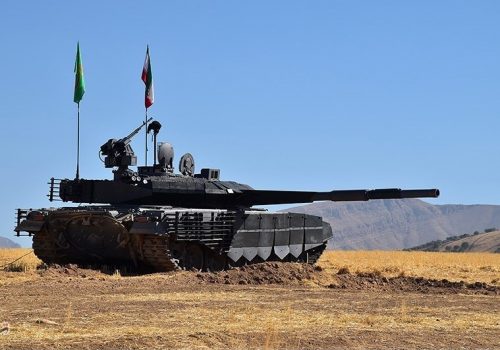Iran just lost one of its largest ships. It’s a major embarrassment.
In the early hours of June 2, the venerable Iranian supply ship Kharg caught fire and sank in the Gulf of Oman near the Strait of Hormuz, following more than twenty hours of failed rescue operations. The loss is a major setback for the Islamic Republic, exposing not only the poor readiness of the Iranian armed forces, but also the lethality of Iran’s military equipment to its own soldiers.
The cause of the fire was not immediately known and it may not be revealed to the public. It could have been an accident or another act of sabotage carried out by Israeli intelligence agency Mossad. Israel has been blamed for numerous mysterious fires across Iran in recent years, as well as the assassinations of half a dozen Iranian scientists, including Mohsen Fakhrizadeh, the reputed head of Iran’s mothballed nuclear weapons program, who was gunned down outside of Tehran in November 2020. There have also been prior incidents of sabotage at sea. For example, Israel was blamed when the Saviz spy ship was damaged by an explosion in the Red Sea in April 2021.
That said, the Kharg was a very old ship, which lends weight to the possibility that this was an accident. It was ordered by Shah Mohammad Reza Pahlavi, built by the British shipyard Swan Hunter in the 1970s, and handed over to Iran in late 1979, just before the Islamic Revolution. Over the years, the ship served the Iranian Navy on multiple occasions. As a resupply unit, it assisted Iranian task forces carrying out anti-piracy operations near the Horn of Africa and supported Iran’s “naval diplomacy” activities by making port calls at several Asian countries, including China and Indonesia. Its political value was seen every time it entered the Suez Canal—just in front of the Israelis.
Such accidents happen to even the most capable militaries. For instance, in 2020, the US Navy decided to decommission the USS Bonhomme Richard amphibious assault ship, which was damaged by fire while docked in San Diego. In 2018, Norway lost a highly advanced new Helge Ingstad frigate, which sunk due to a collision with a tanker. A year earlier, Germany damaged a submarine during a diving maneuver. In April, the British Royal Navy crashed a ship into another vessel while attempting to dock in the dark. More tragic examples include recent losses of an Argentinian submarine in 2017 and an Indonesian one earlier this year.
Although accidents do happen from time to time, their frequency in Iran appears disproportionately high. In 2020, the Konarak support vessel was hit by an anti-ship missile fired by another Iranian warship, the Jamaran frigate, killing nineteen sailors. In 2018, the Damavand frigate sank in the Caspian Sea, ostensibly due to high winds but down to human error in reality. The situation looks even bleaker if one includes accidents in other branches of the Iranian armed forces. At the same time as the loss of the Kharg, two Iranian pilots were killed because of technical problems with the ejection mechanism of the F-5 jet—antique US aircraft also procured during the Shah’s time. Between 2003 and 2020, at least twenty crashes due to technical failures have been reported. Within hours of the Kharg incident, a massive fire broke out at a state-owned oil refinery in Tehran.
The Kharg was not Iran’s largest ship, but it was big—207 meters long and with a full displacement of about 33,000 tons—much larger than Saviz (174 meters) and the Shahid Roudaki (150 meters) forward operating sea base. The latter vessel was commissioned by the Islamic Revolutionary Guard Corps (IRGC) Navy in October 2020. Iran’s largest ship is the Makran, a 228 meters long multi-role ship—used for transport, signal intelligence, and surveillance—that was handed over to the Iranian Navy in January 2021. It is highly plausible that the Makran will now take on the duties previously carried out by the Kharg.
The Iranian government has not revealed what tasks the Kharg was performing at the time of the fire. However, one speculation is that it was destined to head to Venezuela or to become a floating command center for the IRGC—both high priority assignments.
From Iran’s point of view, it is particularly embarrassing and disturbing that the ship sank in the Gulf of Oman shortly after leaving its home base at Bandar Abbas, just six miles from Jask port. Both possible scenarios—Israeli sabotage or technical failure—put the Iranians in a bad light. Either Iranian security, including counterintelligence, once again failed to do its duty, or the Iranians are not capable of maintaining even their most vital military assets.
Robert Czulda is an assistant professor at the University of Lodz, Poland and a former visiting professor at Islamic Azad University in Iran, the University of Maryland and National Cheng-chi University in Taiwan. He is the author of Iran 1925 – 2014: From Reza Shah to Rouhani. Follow him on Twitter: @RobertCzulda.
Subscribe for more from IranSource
Sign up for the IranSource newsletter, which provides a holistic look at Iran’s internal dynamics, global and regional policies, and posture through unique analysis of current events and long-term, strategic issues related to Iran.
Image: FILE PHOTO: Iranian Kharg warship is pictured at a dock in the Syrian coastal city Latakia February 25, 2011. Picture taken on February 25, 2011. REUTERS/Davoud Poorsehat/IRNA/File Photo


